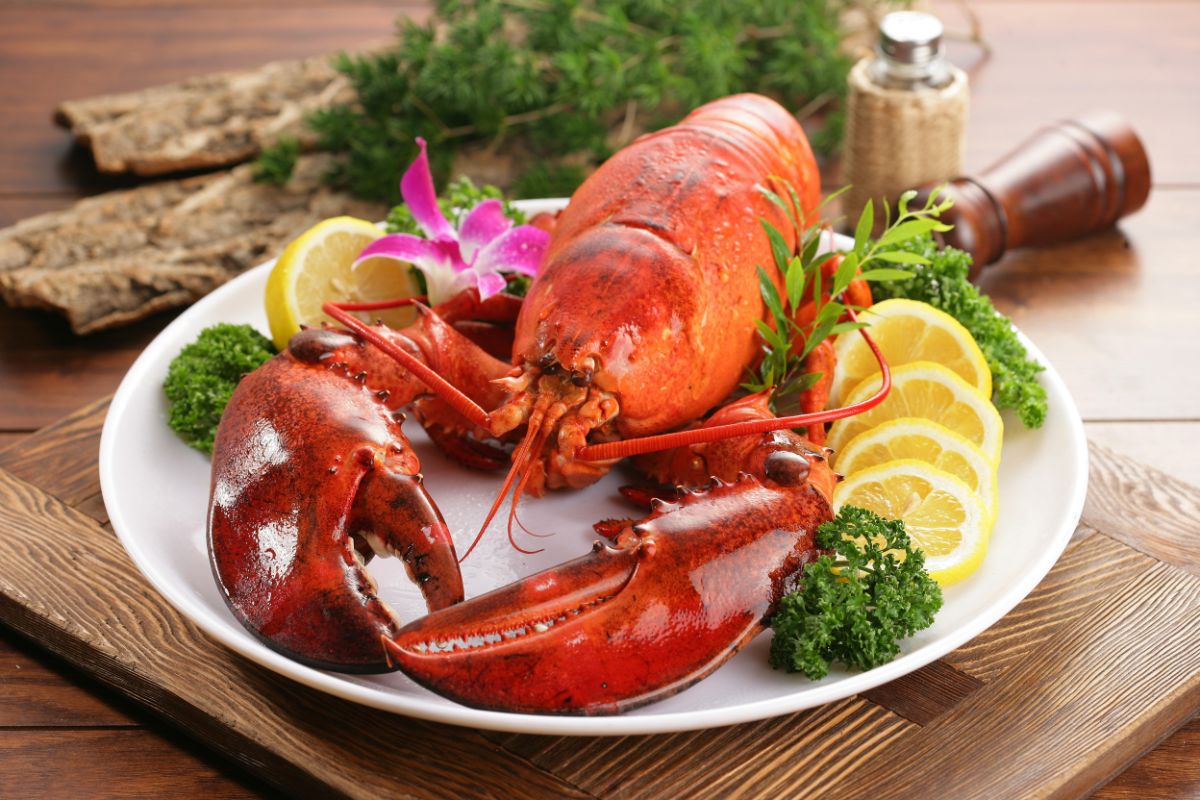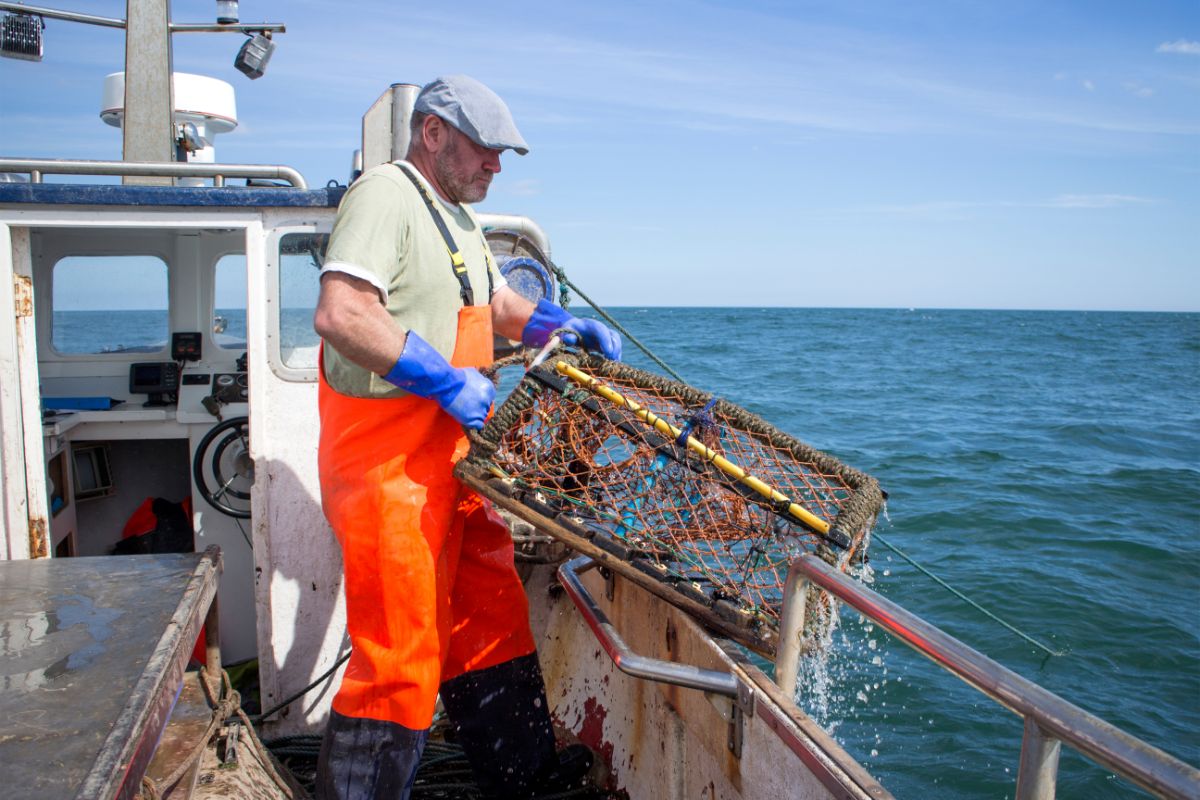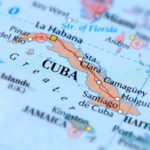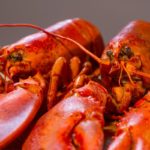Nestled beneath the crystal blue waters of Cuba’s coastline, lobsters are just one of the many aquatic creatures that can be found.

As such, lobster is a popular delicacy in Cuba and the surrounding islands, and is a large portion of the income for the fishermen and women in the area.
But what species are indigenous to the island, and when are they in season?
Caribbean Spiny Lobster
The only species of lobster found in and around the waters of Cuba, are the Caribbean spiny lobster, or panulirus argus.
Appearance
Known for their long, cylindrical bodies covered with spines, and with two protruding spines on the fronts of their heads which appear horn-like, the Caribbean spiny lobster is generally a gold-green combination, as well as orange in certain instances.
Their torsos are also usually patterned with yellow-cream covered spots, which gives them their distinctive look.
However, their main physical difference from other species, such as the American lobster, is the fact that they do not possess large claws on the front of their bodies.
In a way this is strange for lobsters, and can make them more vulnerable to attack from predators, and rival species of crustaceans.
Combined with their long antenna on the front of their heads, which are in fact longer than their actual body length, the Caribbean spiny lobster is capable of generally reaching lengths of 24 inches, something that makes them an even more popular choice for fishing and serving, especially when charging by the pound.
Biology
Biologically, the female spiny lobster resembles similar decapod practices, such as carrying the eggs outside of the body for a period of about 4 weeks.
Beginning life as microscopic and free swimming, the larvae settle into algae after about one year, before undergoing a series of molts, as their exoskeleton becomes gradually harder.
Throughout this period of their lives, they are obviously incredibly vulnerable to predators and exterior danger, and as a result tend to remain hidden and out of sight until their new shell has hardened.
Behavior
Whilst generally skittish and reserved creatures, often hiding from predators in their underwater nooks and crannies, they have been known to exhibit unusual behaviors, such as marching en masse.
These migrations have been observed in both the Caribbean, and off the coast of Florida, wherein hundreds of the spiny lobsters will line up and march from one place to another.
The reasoning behind this process is unknown, and biologists have often speculated what drives them to congregate in such large numbers and migrate in the way they do.
Habitat
Found in the Caribbean sea, the Bahamas, Bermuda, as well as scattered off the coasts of Rio De Janeiro to the coasts of North Carolina, the Caribbean spiny lobster generally spend their time living in the long grasses and mangrove roots, until their shells grow fully hardened, after which they will move higher, making their homes in the coral reefs and the small nooks of underwater rocky outcrops.
They usually favor shallower depths, due to their need for the sun’s heat, and as such their movements and frequencies are generally seasonal.
Diet
The diet of the Caribbean spiny lobster is generally composed of small molluscs, although they will feed on underwater detritus, plant material and vegetation, and dead animals and fish which have sunk to the bottom of the ocean.
Predators
Despite their relative omnivorisity, they are obviously prey to larger, more developed creatures.
The primary predators of the Caribbean spiny lobsters are skates, nurse sharks, octopuses, snappers, and groupers.
Lobsters As Food
Crustaceans in general are popular sources of food for humans, particularly on the coastal locales, where the indigenous ocean life are usually considered delicacies and trademark dishes.
The Caribbean spiny lobster is no different, and serves as an ever popular choice for consumption in the parts of the world where it can be found.
Throughout the Caribbean and the Bahamas, Caribbean spiny lobsters are an important source of export, bringing in a large chunk of revenue, and being shipped all around the world for use in markets and restaurants.
Fishing & Legality
Cuba
Within Cuba itself, there are certain rules and regulations surrounding the personal fishing of Caribbean spiny lobsters.
As they are reserved generally as a tourist food, and an important product to export abroad, personal fishing is largely frowned upon, and there can be hefty fines for locals who intend to catch them for personal consumption.
This has led to a supposed “black market” for seafood on the island, with locals paying inflated prices to secure crustaceans.
Abroad
In most environments where the Caribbean spiny lobster can be found, there are specific laws surrounding when, where, and who can fish for them.

In Florida, the specific season designated for fishing is the beginning of August, to the end of March. This is generally to protect the species during its breeding season, and to ensure the continued presence of lobster populations throughout the area.
However, special “mini-seasons” occur a few days before lobster season officially starts. This is used as a means of giving recreational divers the opportunity to catch some lobsters before mass professional fishing properly begins.
Fishing Techniques
Professional lobster fishermen catch Caribbean spiny lobsters using proper lobster cages, similar to the ones famously used throughout New England and Cape Cod.
These cages are often baited with dead fish, the necks of chickens, or other scraps of meat, which draw the lobster inside, where it is then trapped.
Recreational divers in and around Florida often use a technique referred to as “tickling”, which involves tempting them from their nooks and holes on the reefs or ocean, using either a hand or a small stick.
They can then be picked up by hand and taken to the surface.
In the Bahamas and the Caribbean, a popularly used technique involves the use of a small spear or rod, which can penetrate the shell of the lobster, pulling it to the surface.
In the US, these are considered less humane fishing techniques, and are forbidden under US game regulations.
Environmental Status
Despite their popularity, the way in which they are fished has ensured that their population remains well above target, and nowhere near in danger of becoming extinct or overfished.
The methods through which they are caught also ensure that no habitat damage occurs, protecting the future of the species.
This is also a result of their proximity to the shore, meaning no fishing boats can catch them as an accidental byproduct when they are trawling across the ocean bed.
As well as this, further protective regulations are in place to protect them from bycatch.
Final Thoughts
And there we have it, everything you need to know about the lobsters found near Cuba, their biological information, and the ways and means that they are fished.
The Caribbean spiny lobster is a fascinating creature, and remains somewhat mysterious to biologists and fishermen alike.
Despite this however, they remain a popular attraction in their habitats, both as a delicacy, and as a natural wonder.
- What Is The Largest Island In Cuba? - September 19, 2022
- Havana – Why Is It Cuba’s Most Exciting City? - September 19, 2022
- Cheapest Time To Visit Cuba (Ultimate Guide) - September 19, 2022








